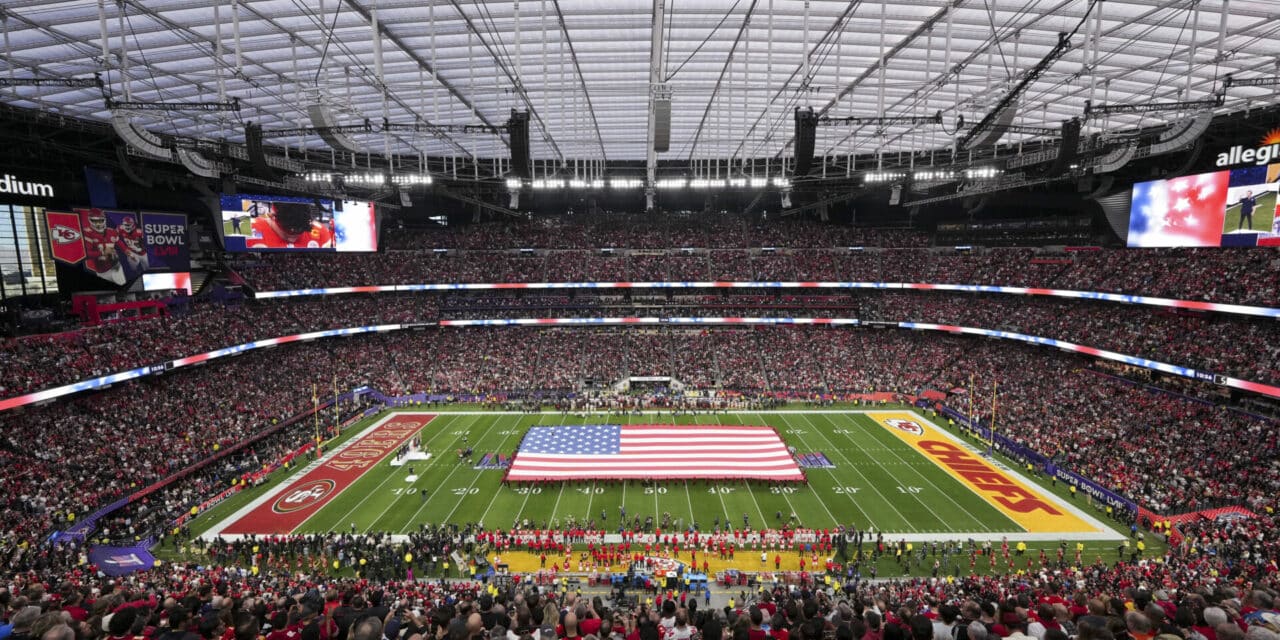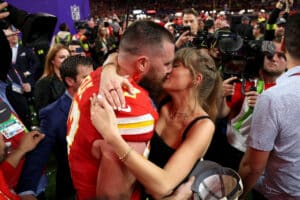Features
‘Superbowlized’ Vegas Success For NFL

HOLLYWOOD, Florida — The first Super Bowl in Las Vegas ran as smoothly as possible last Sunday, due in part to Allegiant Stadium’s design and flexibility, according to a pair of NFL executives in charge of the world’s biggest one-day sports event.
Jon Barker, the NFL’s senior vice president and head of global event production and operations, joined Peter O’Reilly, the NFL’s executive vice president of club business and league events on a video conference call, as they gave a wrap-up of Super Bowl LVIII before attendees at the Stadium Managers Association seminar on Wednesday.
The post-mortem is part of every SMA conference, with O’Reilly typically going solo, but this year, he brought Barker to the table, who’s been with the NFL since November 2017.
Sports designer Paul Griesemer, associate vice president and project director at HNTB, which teamed with Manica Architecture to design Allegiant Stadium, asked the NFL officials for their take on the building as it operated for Super Bowl. The official game attendance of 61,629 was the smallest crowd to date for a non-pandemic Super Bowl, an overall function of the downsizing trend among newer NFL venues and the league no longer requiring 72,000 capacity to host the game.
“It was a fantastic environment,” Barker said. “(Las Vegas Raiders owner Mark) Davis wanted to make sure the fans were as close as possible to the field and you could feel it in that building. You really feel like you’re on top of the action. The ability to expand and contract the service level tunnels to get things in and out was beneficial to us. The way that building loads and unloads was great.”
Overall, it was one of the best-run Super Bowls in recent memory, given all the moving parts operationally and the overall experience at a first-time site, O’Reilly said.
Barker said getting fans into Allegiant Stadium was one of the smoothest pieces of Super Bowl game day the NFL has ever had, with 30,000 people using the Hacienda Bridge connecting Mandalay Bay resort to the stadium.
“What people don’t understand is when Super Bowl comes to town, we change the way the building works,” he said. “One thing we looked at was would the ‘arrival behavior’ change, because there is so much available for people to do in Las Vegas, so would they arrive at the stadium later, and we didn’t see that.”
The wild card was Taylor Swift, the world’s most recognizable face, whose boyfriend is Kansas City Chiefs tight end Travis Kelce. Her attendance at the game helped produce the highest rating ever for a television program, Nielsen reported.
“Every Super Bowl is star studded,” O’Reilly said. “This one felt a little bigger in terms of the number of celebrities in attendance, because of Vegas and all those factors. We had some fun with a little-known global pop star being in the building as well. She created some energy. But there’s a lot we’ve got to do to make sure nobody’s getting special treatment in the volume of celebrities we have coming to the game.”
This year, the NFL made some adjustments to Super Bowl Week programming. For the first time, the league went to a Super Bowl Opening Night format on Monday, Feb. 5 to kick off the week. Tickets cost $30 and about 29,000 folks showed up to see the Chiefs and San Francisco 49ers players and coaches converge with hundreds of media representatives, plus a performance by Blue Man Group.
“Stadium people can appreciate that we wanted to showcase the building and let fans see it dressed up for Super Bowl,” O’Reilly said. “It was a bit of a test run, which is helpful to us, but it’s also about allowing people who (otherwise) wouldn’t have a chance to be there, attend and set the tone for the week.”

SUPER SMOOCH: Kansas City Chiefs tight end Travis Kelce embraces his girlfriend, pop superstar Taylor Swift, after the Chiefs beat San Francisco in Super Bowl LVIII. (Getty Images)
Considering the city’s reputation and expertise for hosting global events, NFL execs were poised to raise the bar to a higher level in Las Vegas for all things Super Bowl.
At the same time, as O’Reilly mentioned, they ensured some activities were accessible to local residents, extending to the Super Bowl Experience held at Mandalay Bay South Convention Center, which drew 200,000 people over four days. Unlike past years, crowds for Super Bowl Experience were especially large on Wednesday, Feb. 7, the first day of the fan festival, Barker said. Tickets cost $25, with free admission for children 12 and under.
For the most part, the NFL stayed clear of the Strip, with the exception of a few elements, such as Super Bowl broadcaster CBS building its set at the Bellagio. In that respect, the impact on the local community was minimized, unlike the Formula 1 auto race in November, which shut down much of the Strip and played havoc with casino workers trying to get to and from their workplace.
“They’re two totally different events,” Barker said. “For us, there wasn’t much of a need in terms of road closures and build-out. There’s the need to build a secure perimeter around the stadium, which changes the entry operation, but the majority of the impact we had was down on the southern end, much closer to the stadium. It was much smaller and limited in terms of the number of days we needed the street closures.”
The NFL did a good job controlling its brand messaging for Super Bowl in a city where glitz is celebrated and there seems to be an electronic billboard every five steps that lights up with different messages, O’Reilly said.
“We knew that we weren’t going to have a perfectly clean environment, but thanks to all of our partners, it felt coordinated,” he said. “We were able to ‘Superbowlize’ the city and take over all the LED boards along the Strip to create an awesome visual. We had a 65,000-square-foot projection screen on the side of Caesars Palace and the Sphere provided an incredible canvas (restricted) to NFL partners and Super Bowl creative.”
It’s a difficult task to cut through all the advertising clutter in Vegas and stand out with a singular message, but the NFL accomplished its goal in that regard, Barker said.
“Super Bowl is already one of the busiest weekends in Las Vegas,” he said. “We were smart in thinking about what we were taking over and when we did it, to make sure wherever you’re moving throughout (the city), you were touching Super Bowl somehow and some way. It wasn’t just a scatter shot.”
Looking ahead, O’Reilly said Las Vegas has a good shot at getting a second Super Bowl. The next three games are locked in for New Orleans, Santa Clara and Los Angeles, but Vegas has an opportunity to bid for 2028 and beyond, he said.
“Vegas put a great foot forward and I can see us being back there,” O’Reilly said. “We learned a lot and they learned a lot. From talking the governor, as well as the city, county, Las Vegas Convention and Visitors Authority and the Raiders, they would like to see it back.”